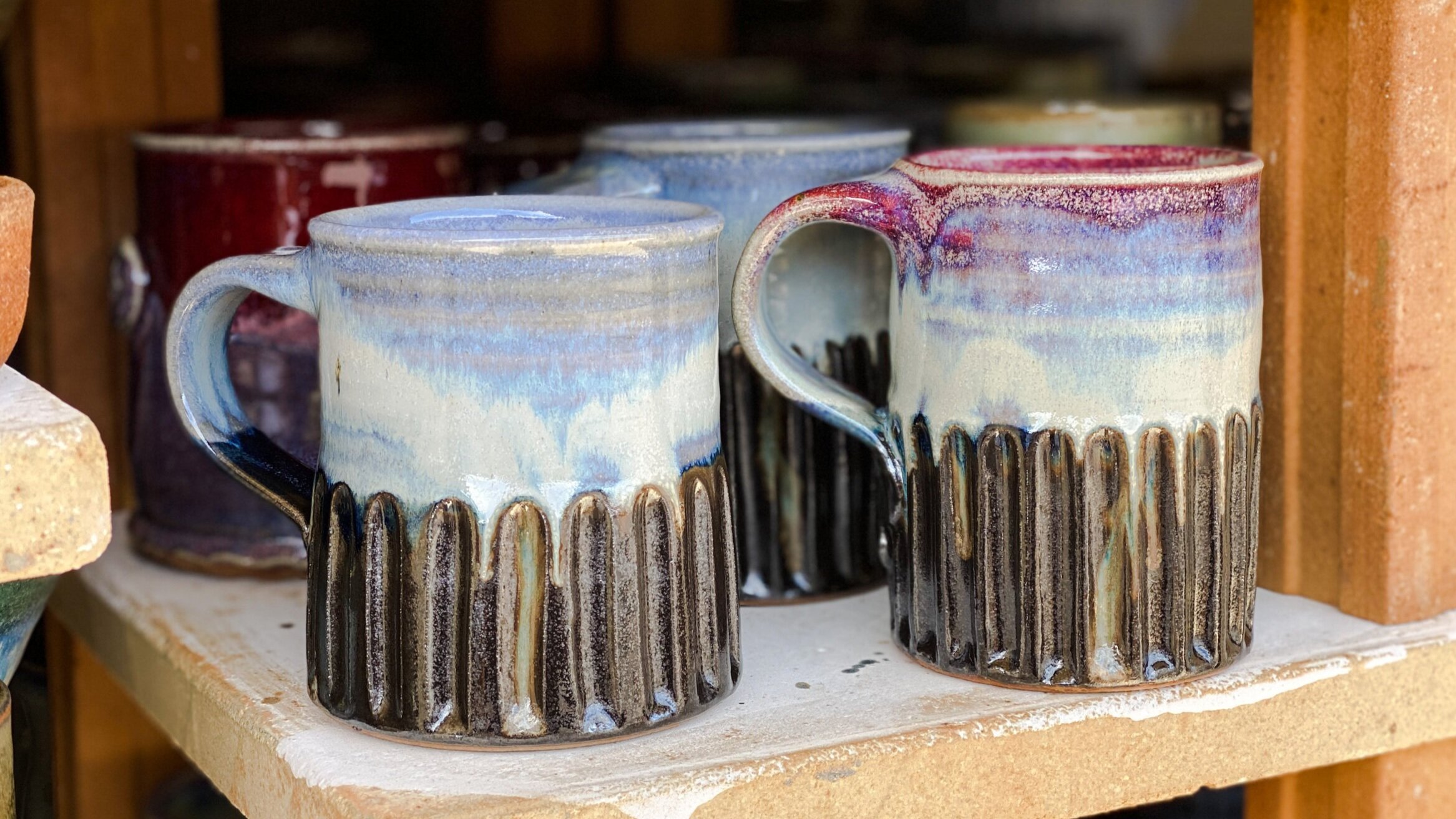“Candling the Kiln” (Heating it up slowly).
When the forecast is 108 degrees, it’s best to arrive at the studio at the crack of dawn to load the kiln! Before the sun beams into the kiln yard, we have to get the kiln loaded, which also means building up the shelving system. I wanted to share Kent's photo before the last firing because it shows how we stack the kiln. With a kiln like ours, you rebuild the furniture system before most firings. We first stacked rows of cordierite shelves in the back and later built the front. You always use posts in three places to support each shelf and build the shelving up to ensure you don’t waste any firing space. In the photo, you can see that we stack the shelves closely together for plates and further apart for taller pots.
Our kiln is constructed of high-temperature refractory brick with a steel jacket. Kent had to replace all the bricks a few years ago and build a new sprung arch. The kiln now has nine-inch thick walls, which leads to slow cooling and more crystal formation in the glazes.
Kent is in the habit of watching the firing closely and adjusting airflow and fuel levels as needed. We also have two “cone packs” to determine the heat levels inside. The packs are the groups of three little triangles in the picture below.
This year, we have been averaging 3 or 4 firings per month. We usually put 200-250 pots in each firing, but that number varies depending on the pots' size. Below are some pictures from our firing this past week.
Wine Goblets for Uncommon Goods
This past firing had 100 goblets because Kent will be selling these through Uncommon Goods. Look for more about that soon! We also had several plates in there since Kent continues to make individual dinner sets for sale in our shop, Blue Sage Pottery on 6th, and in our Etsy store. Here are some recent plates fired with a Shino glaze. This glaze varies from white to silver, with iron spots and occasional orange on the rims. It is a subtle complement to many different types of cuisine, and we have a set of these at home that we use frequently for big salads and pasta dishes. Please stop by the gallery to check out our newest stoneware pottery and dinnerware or view the latest in our online shop!
Shino Plates







